How to Make A Lifelike Animatronic Animal
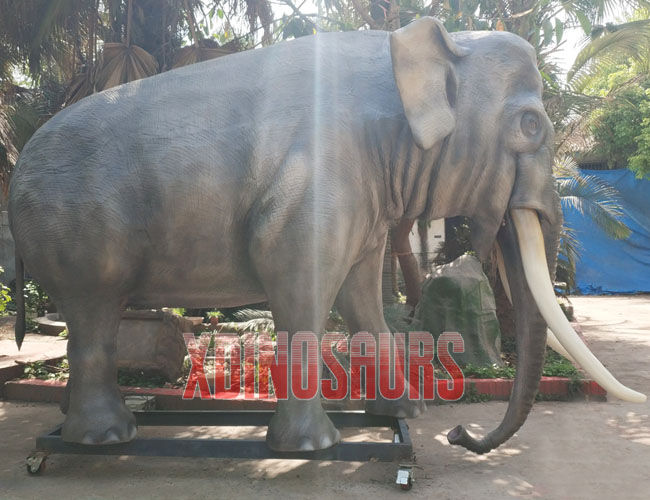
There is no doubt that the product we produce the most is the animatronic dinosaur. Then, the second most common type is the animatronic animal model. The location where the lifelike animal exhibits are displayed enables visitors to feel as if they are in a real rainforest world, ocean world, jungle world etc.,
Here, we will elaborate on how to create a lifelike animal model with motions & roars one by one. If you are a potential buyer, after seeing the production process here, you will have a certain plan for the disposal of the exhibits.
In this animatronics building project, choose a natural animal to create a restoration (its appearance, skin, hair, skin color, movements). Use the information about the modern or prehistoric creatures discovered to create models. In the above video, you can see the meticulous working scenes, which demonstrates the necessary steps such as carving, peeling and painting to restore a large animal model.
QUICK FACTS:
#1. Drawing of internal mechanical structures
#2. Mechanical workers construct the internal framework after receiving the drawings
#3. Fabricators use sponge to wrap the mechanical framework
#4. Sculptors engrave animal outline on the sponge
#5. Fabricators make skin textures or hair-graft
#6. Fabricators make silicone skin (only for animal without hair)
#7. Dyer paints color (skin or fur)
#8. Electricians inspect
1. Drawing of internal mechanical structures
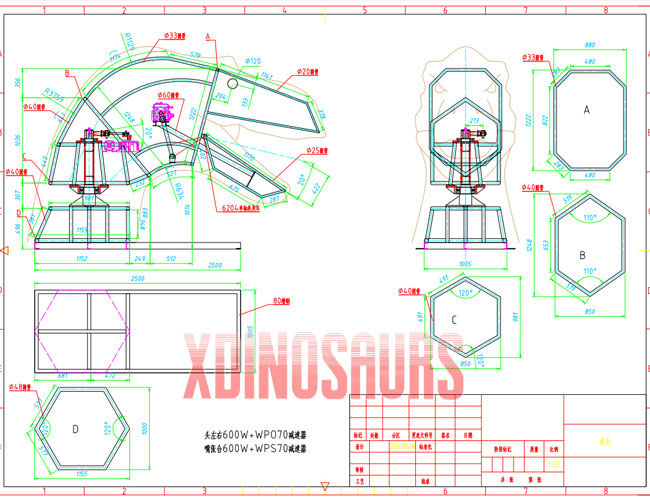
- Sketch the outline of the animal model on A4 paper.
- And mark the outline sectional diagrams and the scale of dimensions.
Needed materials and tools:
- One A4-sized sheet of paper
- One pencil
- One eraser
- One computer (optional)
Use computer to draw:
On your computer, use the PS or other software to create sketches of the animal’s body. Draw the animal from top, bottom, side, front and rear views. Even more rigorously, it is possible to create three-dimensional spatial animal model. It can also indicate the animals characteristics, such as flat heads, the curvature of their bodies, long arms, etc.
For each characteristic, provide a brief description so that the workers can consider it more thoroughly during the production process.
2. Mechanical workers construct the internal framework after receiving the drawings
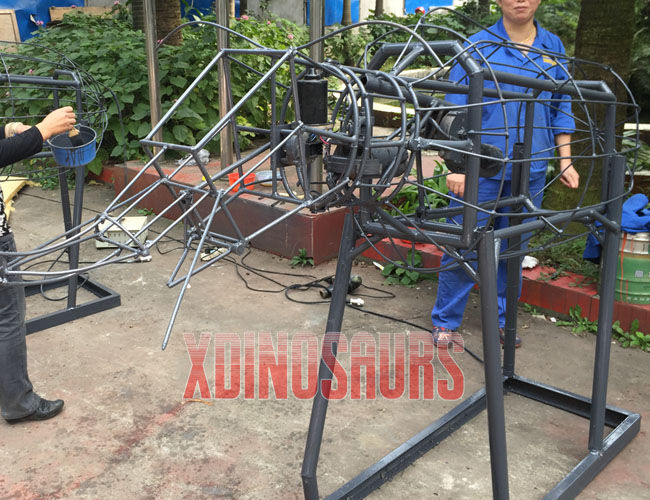
- Based on the marked dimensions, cross-sectional diagrams and external features, the steel pipes / steel frames are welded together to form the mechanical framework inside the animal.
- Leave the position for mechanical transmission and install the motor properly. (At different locations, the power rating of the motor varies; based on the force required in that area, a motor with a higher power rating should be used)
- After the mechanic completed the fabrication and installation of frame and motor, applied industrial grease at the transmission points and installed springs to reduce the large impact force caused by the motor’s operation.
Needed materials and tools:
- National standard steel (steel pipes + channel steel)
- Wiper industrial motors
- Mold reducer
- Industrial butter
- Spring
- Welding machine
- Electrode holder
- Welding rod
The quantity of the above materials and tools is determined by the size of animal model.
A 5 meters long animatronic elephant, required quantities – 300 kilograms of steel, 7 motors (150W – 250W), 1 reducer, 130 grams of industrial butter, 3 springs, 2 welding machines with a power of 1000W, 3 welding pliers and 25 welding rods.
3. Fabricators use sponge to wrap the mechanical framework
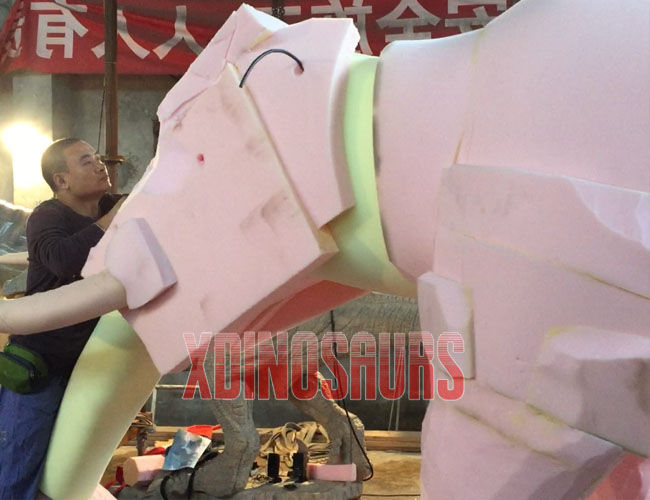
- Wrap and attach a 5-centimeter-thick sponge / foam layer all over the mechanical framework.
- Attach 7-centimeter-thick, 3-centimeter-thick and 10-centimeter-thick sponge respectively to the legs, claws and head of the animal (to fill in larger shapes).
Needed materials and tools:
- 3cm / 5cm / 7cm / 10cm thick sponge
- Universal Glue (Yellow Glue – Adhesive)
- Long knife (for cutting sponge)
- Brush (dipped in yellow glue)
A 5 meters long animatronic elephant model. Required quantities – 8 pieces of sponge / 1.5 meters × 3 meters (10cm thick 3 pieces, 7cm thick 2 pieces, 5cm thick 2 pieces, 3cm thick 1 piece), 15 kilograms (1 bucket) of yellow glue, 3 long knives, 3 brushes.
4. Sculptors engrave animal outline on the sponge
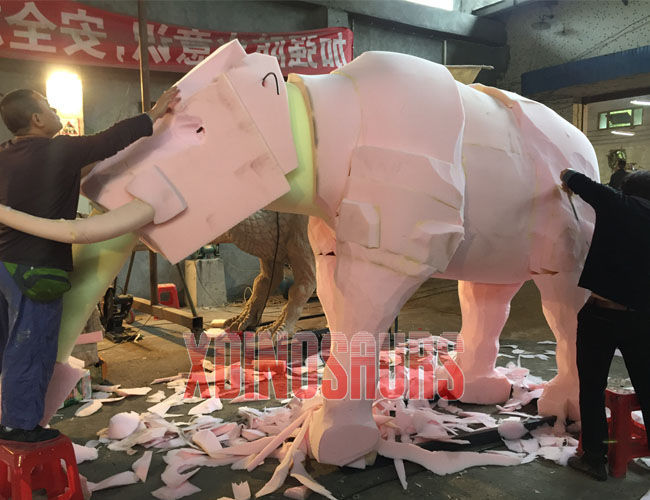
- Use a long knife to carve out the outline of animal’s appearance (the head, the mouth, the claws, the tail, etc.)
- Use a knife to carve out the types of limbs and hair-like of animals one by one.
Needed materials and tools:
- A 10-centimeter thick sponge
- Universal Glue (Yellow Glue – Adhesive)
- Long knife (carving sponge)
- Short knife (carving sponge)
A 5 meters long Elephant model. Required quantities – 2/3 sheet of sponge / 1.5 meters × 3 meters, 10 centimeters thick, 120 grams of yellow glue.
5. Fabricators make skin textures or hair-graft
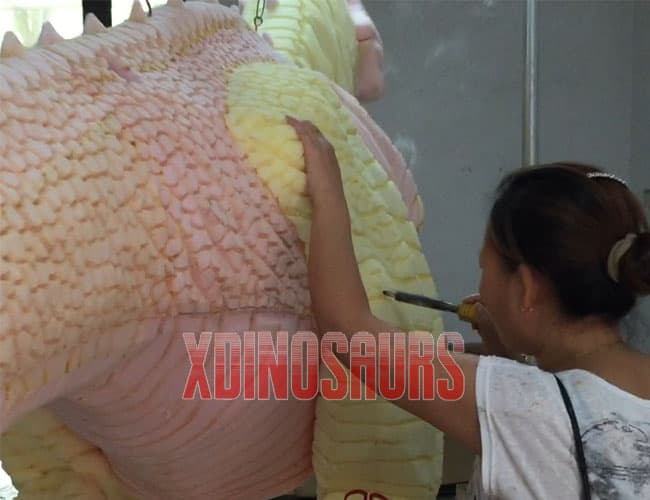
If the model to be made is that of an animal without hair, such as elephant, crocodile, shark, dolphin, etc., skin textures need to be created on the sponge mold.
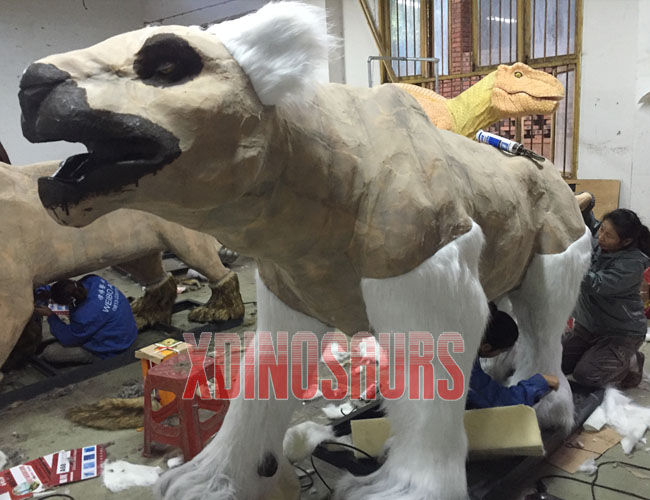
If the model to be made is that of an animal with fur, such as lion, tiger, eagle, camel, panda, zebra etc., artificial fur needs to be pasted onto the sponge mold.
- On the pre-shaped sponge, carefully outline and stamp the skin texture of the animal (usually in the form of dots or tree bark patterns).
- On the pre-shaped sponge, manually attach the synthetic hairs one by one (these hairs usually come from real animal skins or artificial fibers).
Needed materials and tools:
- Electric soldering iron (slightly thicker textures)
- Electric soldering pen (fine textures lines)
- Universal Glue (Yellow Glue – Adhesive)
A 5 metes long elephant model, required quantities – 2 electric soldering irons, 2 electric soldering pens, 20 kilograms of yellow glue.
6. Fabricators make silicone skin (only for animal without hair)
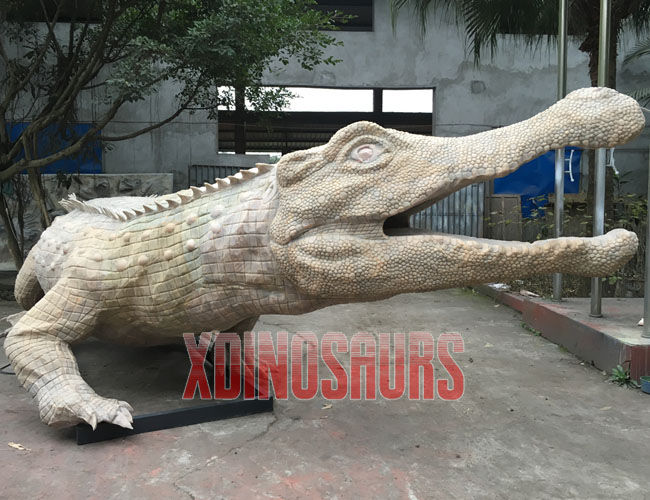
- Evenly apply a layer of silicone sealant on the finished sponge texture.
- Before the silicone dries, carefully stick a layer of stockings on it.
- Apply two more even layers of silicone.
- Then a layer of the mixture of gasoline and silicone is applied, making the animal “muscle skin” smooth as a mirror.
Needed materials and tools:
- Silicone adhesives
- Gasoline
- Stockings
- Scraper
- Glue gun
- Hairbrush
A 5 metes long elephant model, required quantities – 30 tubes of silicone adhesives, 10 kilograms of gasoline, 70 pairs of stockings, 3 scrapers, 2 glue guns and 2 brushes.
7. Dyer paints color (skin or fur)
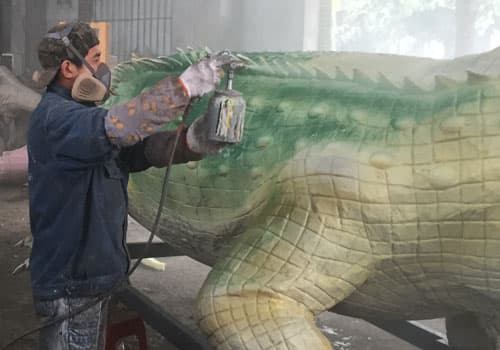
Animatronic animal without fur

Animatronic animal with fur or hair
- Mix the oil paints, gasoline and silicone in a basin.
- Pour the well-mixed mixture into the pot of spray gun (before pouring, attach a layer of stockings over the pot spout, so that the paint residue can be effectively filtered during the pouring process).
- Connect the air tube (spray gun and air compressor).
- Paint colors on the various parts of animal’s body according to the actual color of its skin or fur.
Needed materials and tools:
- Silicone adhesives
- Gasoline
- Stockings
- Oil paints
- Basin
- Spray gun
- Air compressor
- PU air tube
A 5 meters long elephant model, required quantities – 15 tubes of silicone adhesives, 6 kilograms of gasoline, 1 pair of stockings, 8-10 tubes of oil paints, 1 water basin, 1 spray gun, 1 air compressor and 10 meters long PU air tube.
NOTIFICATION: The work of color printing is meticulous and complex, and it can only be accomplished by skilled and experienced painters or workers. The combination of materials and colors is also based on years of experience. Ultimately, the animatronic animal realism is achieved depends on the quality of painting work, which accounts for at least 50% importance.
8. Electricians inspect
- Place the completed CPU control box beside the animal’s leg.
- Connect the cables between the animal and the control box.
- Turn on the power supply of the control box and test whether the animal’s movements and roars are smooth.
- Utilize the entire working day to continuously have the animal move (for testing), so as to ensure that there are no electrical faults before it outs of production factory.
Conclusion
The above is a complete animatronic animal production process. Building a lifelike animal model with movement and roar is a labor-intensive task. However, we are able to produce animal models like that in quantities. If you are in need of lifelike animal models to be placed in your park, shopping mall, museum, funny zone, playground…please contact us for their prices.


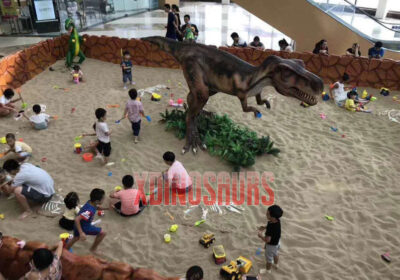
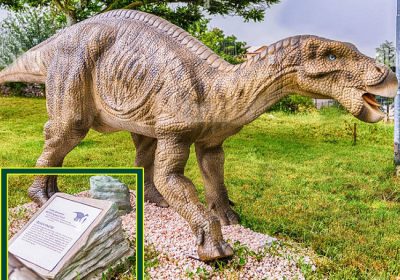
Leave a Reply